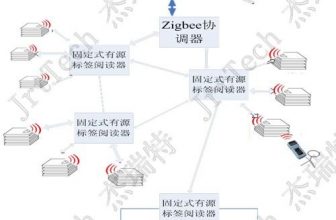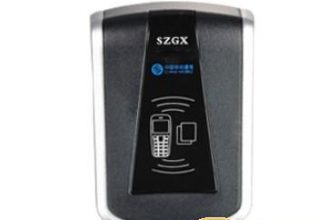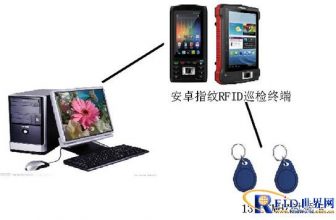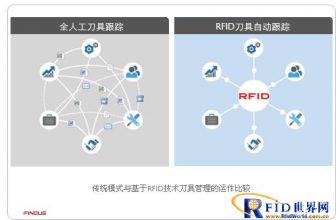
RFID food traceability management system solution
[ad_1]
1. System introduction
In recent years, food safety (food poisoning, mad cow disease, foot-and-mouth disease, bird flu and other livestock and poultry diseases, serious agricultural residues, and a surge in imported food materials, etc.) have occurred frequently, which has seriously affected people’s health and caused widespread worldwide Paying attention to how to effectively track and trace food has become an extremely urgent global issue.
At present, the output of major foods such as cereals, fruits, meat, poultry, eggs, and aquatic products in my country ranks first in the world. In order to ensure the food safety of the people, effectively control the outbreak of food-borne diseases, and eliminate the export of my country’s food products. Food tracking and tracing laws and regulations of importing countries are regulated, so the establishment of food tracking and tracing work in my country will have a huge impact on the development of the food industry. However, there are still very few examples of the application of the automatic traceability system in the entire food production process in my country. The traceability of the domestic food industry is currently mainly only in the retail settlement link, and is far from being applied in the entire food supply chain. The entire supply chain can be traced. form.
Xindao Technology’s RFID food traceability management system will use advanced RFID technology and rely on network technology and database technology to realize information integration, query, and monitoring, and provide specific products for each production stage and the process of distribution to the final consumption field. Reasonable decision-making on safety, food ingredient sources and inventory control, realizing food safety early warning mechanism. RFID technology runs through food safety, including production, processing, circulation, and consumption. The whole process is strictly controlled, and a complete food safety control system of the industrial chain has been established, forming a closed-loop production for the production and sales of various food companies to ensure Provide the society with high-quality and assured food, and ensure high-quality data exchange in the supply chain, allowing the food industry to thoroughly implement the source of food traceability and the ability to provide complete transparency in the food supply chain.
Through the construction of this system, the problem of inaccurate reading of data due to the damage to the bar code caused by oil pollution, humidity and other reasons is solved. It can not only trace the disease and pollution problems in the breeding and processing industry, but also trace the abuse of drugs during the breeding process. , The use of additives beyond the scope and limit in the processing process has changed the previous food quality and safety management that only focused on post-production control, while ignoring the phenomenon of production prevention and control. Improved food processing technical regulations, hygienic specifications and certification standards in production, and promoted the industry’s The overall progress will comprehensively improve the level of my country’s food industry.
2. System structure
Xindao Technology’s RFID (electronic label, radio frequency identification) food traceability management system can ensure food safety and can be traced throughout the process. It regulates the four links of food production, processing, circulation and consumption, and integrates food such as rice, flour, oil, meat, and dairy products. All issued an “electronic ***”—all are affixed with RFID electronic tags, and a food safety database is established, starting from the food planting and breeding and production and processing links, to achieve the tracking and tracking of the whole process from farmland to table Traceability, including all the information in the circulation process of transportation, packaging, sub-packaging, sales, etc., such as production bases, processing companies, distribution companies, etc. can be found in the database through electronic tags.
Food traceability management system includes:
Three levels of structure: network resource system, public service system and application service system
Secondary node: It is composed of the food supply chain and safety production supervision data center and the key monitoring nodes in the food industry chain. The data center provides sufficient storage space for massive food traceability and safety monitoring data, ensuring the openness, resource sharing and safety of information sharing, and realizing food tracking and safety monitoring management functions. The key monitoring nodes include planting and breeding nodes, production and processing line nodes, warehousing and distribution nodes, and consumption nodes, which realize the connection of data collection and information chain of each node, and make each link visible.
A data center and infrastructure platform: 1 center is the food supply chain and safety production supervision data management center. This center is a management platform built on the basic support platform of JieXun Electronics ezRFID (Figure 5). EzRFID is RFID middleware and the center of RFID operation. It acts as an intermediary between hardware and applications. It will realize the smooth operation of various RFID devices and software at different nodes and different traceability links. The functions included are not only the delivery of information, but also services such as interpretation of data, security, data broadcasting, error recovery, locating network resources, finding a cost-compliant path, and prioritizing messages and requirements. Its function is mainly reflected in two aspects. One is to operate and control the RFID read-write device to work in a predetermined way to ensure coordination and coordination between different read-write devices; the other is to filter data according to certain rules to filter out most of the redundancy. Data, the truly effective data is transmitted to the background information system. The framework includes two parts: RFID edgeware and RFID integrated middleware.
The following is a schematic flow diagram of the tracking system for livestock (Figure 6), grains, oils, and vegetables (Figure 7).
As shown in the figure, after the pig or cow is born, it is marked with an RFID electronic ear tag. The ear tag contains the unique identification number of the pig or cow. This number will run through all nodes and be associated with the relevant management and monitoring information of each link , In order to achieve the retrospective purpose.
Three, system function
Xindao Technology RFID (electronic label, radio frequency identification) food traceability management system solution consists of the following systems: central database system, planting and breeding safety management system, safe production and processing management system, food supply chain management system, monitoring system, food The basic safety information service system is composed of information links established through the informatization of planting and breeding production, processing production, circulation, and consumption, which realizes the safety control of the enterprise’s internal production process and real-time monitoring of circulation links to achieve food traceability and recall.
Each system function:
1. Central database system
Mainly include the following:
● Food classification library and sample library
● Attribute database of food production units
● Food safety standards and safety indicators
● Food production and management information
● Food safety monitoring and testing data
2. Planting and breeding farm management system
The data of the planting farm is uploaded to the management center, and the supervision department can realize the monitoring. Mainly include the following functions:
● Food maintenance and management: establish basic information files for the livestock, poultry, fruits, vegetables, fish, etc. purchased from the planting farm or outsourced, and identify them with electronic tags;
● Production and development management: According to standard parameters, judge its development and health status, adjust nutrition measures and feeding methods;
● Feeding management: record each feeding situation, check the nutritional requirements at different growth and development stages, and select reasonable feeding formulas;
● Reproduction management: record family tree information and reproduction information;
● Disease management: establish disease files according to corresponding and management standards;
● Epidemic prevention management: Establish quarantine and immunization files, including vaccines, medications, etc., and embed various prohibited drug information in the system to prevent animals from being released during the drug withdrawal period and eliminate source pollution.
3. Safety production and processing management system
This system is mainly for the management of the production and processing of food in breeding farms. Specifically, the slaughtering and production and processing of meat such as livestock, poultry, and fisheries, the selection and processing of foods such as fruits, vegetables, grains, and rice, and the production of milk and dairy products. , Beverage production, etc.
In the production and processing link, the information identified by the label in the planting and breeding link is passed into the information chain of the production and processing link, and the information on the different nodes of the production and processing is collected according to management standards and specifications, and the information is uniquely identified by the electronic label, and the information is transmitted to In the logistics link.
4. Supply chain management system
Mainly for warehousing and logistics distribution management, through RFID in the production and processing and store supply chain to establish a traceability system. In logistics, the product information is recorded on the label of the pallet or box. In this way, the RFID system can clearly know the respective positions, identities, storage and transportation history, destinations, expiration dates and other useful information of the boxes on the pallet or even the individual goods. The RFID system can provide detailed data for the actual goods in the supply chain and establish a physical connection between the goods and their complete identities. Users can easily access these completely reliable goods information. And through the efficient data collection of RFID, the warehousing logistics information can be fed back to the production and processing in time to guide the production.
5. Consumption management
When the food enters the most terminal sales, the existing mature bar code technology can be used according to the analysis of the specific situation.
6. Quarantine monitoring system
In addition to quarantine during planting, breeding, production and processing, the RFID-based quarantine monitoring system is also implemented at crossings, and the monitoring chain is extended to supermarkets, and the monitoring objects cover all kinds of food.
7. Basic information service system
This system is a unified resource to publish a food safety data information sharing service network, providing a full range of food safety data information sharing and services. It is mainly used for information inquiry, food safety monitoring and analysis, event prevention, etc., and can be deployed to consumer terminals such as supermarkets. By scanning the electronic quality and safety code of the final product, the information of each supply link of the purchased food can be inquired, and it can also be traced to the upper level to finally determine the problem. This method is mainly used for the recall of problem products.
Four, system characteristics
1. UseRFIDThe advantage of the characteristics of the food safety and traceability management, compared with the record file traceability method is efficient, real-time, and convenient.
2. Provide completely transparent management capabilities in the food supply chain to ensure the entire visual control, monitoring and traceability of food safety, and to recall problem foods.
3. It can comprehensively monitor the source pollution of planting and breeding, additives in the production and processing process, harmful substances, and safety hazards in the circulation link.
4. It can provide a basis for effective assessment and scientific early warning of potential food safety hazards.
5. Data can be reported in real time and accurately through the network, which is convenient for faster and more in-depth analysis and research.
6. Through the Internet, consumers can inquire the complete tracking information of the food they buy.
V. Applicable fields
This system can be widely used in the safety traceability management of various foods such as agriculture, forestry, fishery, animal husbandry and sideline products. It is suitable for grain and oil food, livestock and poultry food, fruit and vegetable food, aquatic food, condiments, dairy products, convenience food, infant food, Food additives, beverages, cosmetics, health foods, etc.
[ad_2]





